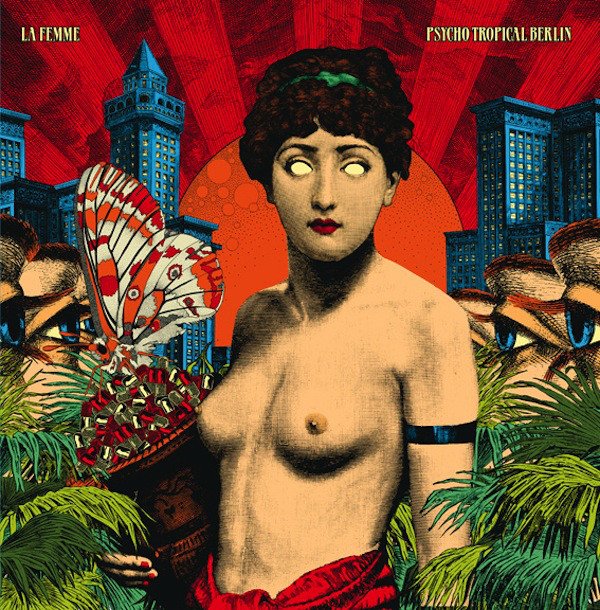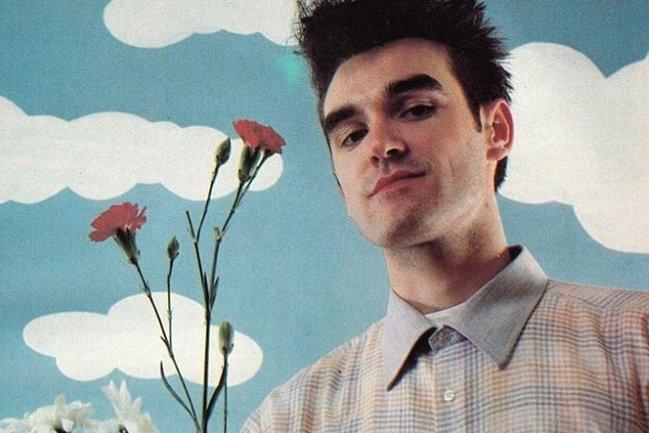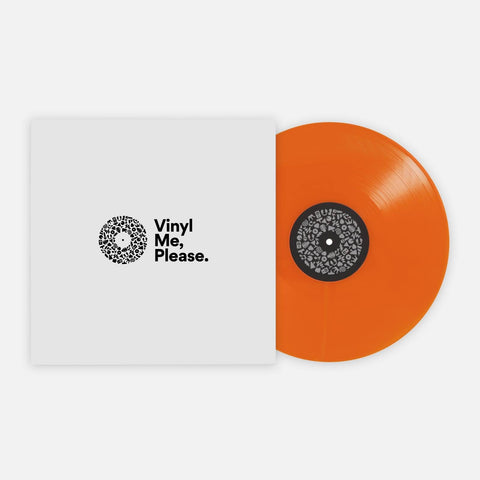Throughout the mid ’60s, “Beatlemania” and the British Invasion had taken over the world in one fell swoop. While this configuration of pop and rock ruled the airwaves and stole the hearts of the youth, an interesting reciprocal was forming within Europe, specifically France: A lyrically driven style of beat music with bubbly charm and innocent confidence, as well as heartfelt ballads with angelic reverberations that deliver chills upon first listen.
This genre is referred to as Yé-Yé, a term inspired by the phrase “Yeah! Yeah!” that was often exclaimed in the rock ’n’ roll music of the time. The genre was predominantly led by young female singers, or “chanteuses,” who to this day remain as popular figures in music and fashion. These artists have become staples in modern music and have inspired innumerable groups, which brings us to today.
Many modern artists are expanding on these classic sounds and creating something entirely new, yet just as wonderful. However, trying to find an initial starting point with any form of music can be difficult, let alone music that’s from another country and not in your native tongue. But fear not! This bundle of albums cover a majority of essential music to come out of France, both old and new that any novice listener should hear and ultimately own.

Françoise Hardy: Françoise Hardy (aka Comment Te Dire Adieu)
Among the classic chanteuses, Françoise Hardy has remained in the forefront ever since her debut in 1962. Her presence and alluring vocal delivery prove why she was a leading figure in the Yé-Yé movement. These qualities that made her an icon are demonstrated flawlessly on this very album. Out of her countless releases, which are all fantastic, this one seems to stand out among new listeners and longtime fans. Much of the album covers themes of love, loss and dejection with a unique melancholy, even though some songs have an upbeat swing. Tracks like “Il n'y a pas d'amour heureux” sound like ethereal lullabies, but with further dissection and translation, you discover their despondent poetic nature. Across the entire record, lush instrumentation provided by fragile pianos, guitars and orchestral strings sustain beneath Hardy’s delicate voice like a heavenly chorus of cherubs. This music is pure emotion with a great sadness that drapes itself over every word, and yet, leaves you with a warm feeling inside.

Juniore: Ouh là là
Juniore are the group that everyone should be aware of. Their music is like a lost soundtrack to an obscure horror film. On one hand you confront dark noir with a ’60s surf bounce and Yé-Yé melodies wrapped in reverb, fuzzy guitars and ghostly organs. Then you are greeted with sleek sunshine pop grooves carried by an upbeat strut. But it’s Anna Jean’s voice and songwriting that ties every song together to produce this mysterious gift. Throughout this record you’ll catch yourself in a hypnotized-like state; vocal melodies swing gently in front of you as natural rhythms cast a spell. Juniore also do an incredible job of melding upbeat instrumentals with dark themes, like on the track “Le cannibale.” To be brief, this trio takes the ’60s girl group dynamic and amplifies it, and hearing their discography physically is simply a pleasure.

Jacques Dutronc: Jacques Dutronc (1966)
While female musicians primarily dominated the French pop/rock genre of the ’60s, there were many innovative male musicians during this period as well. One of the most notable being Jacques Dutronc. Dutronc had a quality about him and his music that was nothing short of compelling, sporting an unruffled persona and enthusiastic vocal delivery, as well as a garage rock sound that would later be adapted by groups like the Black Lips (who in fact covered one of his songs). Any fan of early garage rock groups such as The Sonics or The Seeds will have no trouble finding something to enjoy from Dutronc’s work. Dirty guitars, loud drums and vigorous tambourines fill this debut album with unbridled energy. There isn’t a single stale moment on this LP. To sum up, with his unblemished catalog — and not to mention his marriage to the one and only Françoise Hardy — Jacques Dutronc is one of the most significant figures in French music and is a necessary component to any music fanatic’s collection.

Various Artists: C'est Chic! French Girl Singers of the 1960s
A compilation is often the best way to delve into an extensive genre such as this. After listening to several different collections of ’60s French pop, this is by far the best representation. This allows new listeners to discover classic female artists such as France Gall, Jacqueline Taïeb, Françoise Hardy and Brigitte Bardot, to name a few. Not to mention the display of talented lesser-known artists. While most of these performers were extremely prolific, some having 20 to 30 albums under their belts, in just under an hour this comprehensive 24-track compilation delivers a perfect beginners’ guide to this illustrious genre.

Brigitte Fontaine: Comme à la Radio
In 1969, experimental singer Brigitte Fontaine teamed up with the Art Ensemble of Chicago to create something far different from the predominant Yé-Yé artists preceding her. Although this album may only be considered to have a cult following, you can hear what would eventually inspire groups and singers like Björk and Laetitia Sadier/Stereolab. During some open spaces on the album, you may even catch similarities to Kim Gordon on Sonic Youth’s dreamier side. Fontaine’s intimate voice surrounded by dissonant horns, thumping tablas and slippery bass create a swaying uneasy experience that is hauntingly beautiful, and at times hallucinogenic. At many points in the album, e.g. “Le brouillard,” it sounds as though it could fit comfortably within the realm of Alejandro Jodorowsky’s The Holy Mountain. While this record abandons the principles of Yé-Yé, root ideas are still present, yet done in a folk-like atmosphere à la Incredible String Band and perhaps a hint of Vashti Bunyan. An album of this stature in its analog form would immensely benefit an interested ear.

Jean-Claude Vannier: L'enfant Assassin des Mouches
By the 1970s, Jean-Claude Vannier had made a name for himself as one of the most important arrangers and studio musicians in French pop. Vannier gained popularity by composing and orchestrating for French television/film and also for the likes of Serge Gainsbourg, Jane Birkin, Johnny Halladay, Françoise Hardy, Sylvie Vartan, Brigitte Fontaine and many others. While his collaborative efforts and soundtrack contributions are marvelous, it’s his debut solo effort that unquestionably stands out as a unique and peculiar piece of work. “L’enfant Assassin des Mouches” is an instrumental collage cycle that is enigmatic to say the least. Epic prog-rock and cinematic soundtrack arrangements oscillate in a meticulous fashion while sharing the floor with a certain nonchalant European-funk sleaze — sometimes all incorporated within just one track. Some spots on the album are even reminiscent of Frank Zappa and the Mothers of Invention’s disorienting whirlpool of avant-garde. Be that as it may, to describe this album with only the limitation of words doesn’t nearly do this masterwork justice. This was created for deep, concentrated appreciation. Although originally sought after by many collectors for its scarce quantity, this album has been fortunately given another chance, is available once again and should be treated as a necessity.

France Gall: Poupée de cire, poupée de son
France Gall is essentially the cover girl for the mid-’60s Yé-Yé sound. Coming from a musical family, Gall’s father encouraged her to make music. At 16 years old, her first single “Ne sois pas si bête” became a hit. At the request of her music publisher, notorious songwriter Serge Gainsbourg was asked to step in and write for Gall. With the help of Gainsbourg, she furthered her success with several popular singles such as “Laisse tomber les filles.” By the age of 17, she went on to win the Eurovision song contest in 1965, performing the soon-to-be hit song “Poupée de cire, poupée de son.” Since it was a Gainsbourg composition, the song was full of sexual double entendres and word play. The song appears on her fourth album of the same name and is an excellent representation of the Yé-Yé genre. An even mix of saccharine melodies with lively orchestration neighboring melodious lullabies cradle this 30-minute daydream. Gall’s singing capabilities are showcased all across this album too, with each track highlighting different vocal ranges from vivacious and powerful to elegant and soft. Gall went on to release many great albums, including the oddly psychedelia inspired 1968, but Poupée de cire, poupée de son is a true milestone in her discography and will satisfy any fan of ’60s pop.

Cléa Vincent: Retiens mon désir
Retiens mon désir is a present-day French pop wonderland full of fun grooves and infectious feeling. Disco rhythms drive this album from start to finish, and funky bass lines adjacent colorful synthesizers shimmer all around this beautifully produced paradise. Even though this album is relatively short — only 38 minutes — these 11 tracks have zero filler and are all addictive, both on their own and in conjunction with one another. Cléa Vincent is an artist who embraces the music of her country’s past but doesn’t let it typecast her. She is truly a unique figure in the electronic-pop revival.

La Femme: Psycho Tropical Berlin
When this record was released in 2013, it took many listeners by surprise. It was a cocktail of surf rock, dark pop and heavy usage of electronics, all with a Yé-Yé sensibility. The description of this style seems as though it would sound shambolic, but in fact it’s the exact opposite. This myriad of genres puree together into something quite magical. Album opener “Antitaxi” drops you off in an unfamiliar territory that manifests into a dystopian echo chamber. As the song crashes into an esoteric veneer of noises, you know you’re in for the ride, but the destination is unknown. Once you start this album, you don’t stop to play something else; you must know what happens next. Spy-like chase scenes to the beat of a heart racing rhythm narrated by male/female vocals exemplify this albums intensity. But not every cut on this debut is an espionage sprint. A song like “It’s Time To Wake Up 2023” is a nearly 7-minute electronic journey with a steady stride that acts as a cool down section in the middle of the track listing. Every listen of this record provides something hidden that wasn’t apparent in the listen prior, so it only makes sense to own this undercover phenomenon.

Serge Gainsbourg: Histoire de Melody Nelson
Serge Gainsbourg is to French music what James Brown is to soul. If a Yé-Yé artist or song was a hit, Gainsbourg most likely had something to do with it. A provocateur in every sense of the word, Gainsbourg’s insatiable (and at times controversial) hunger for women, vices, tongue-in-cheek humor and wide array of genres set him apart from the rest. Debuting in the late ’50s with snappy vocal jazz pop, he wouldn’t begin finding success until providing compositions for other singers. Fast forward to the late ’60s, after writing for a plethora of artists, Gainsbourg becomes musically and romantically involved with Brigitte Bardot. In turn, his music develops into what would be his signature brand of salacious erotica. After leaving Bardot, Serge begins a love affair with actress, singer and model Jane Birkin. Then, in 1971, 8 years before Birkin and Gainsbourg split up, and the birth year of their daughter Charlotte Gainsbourg, a now-celebrated masterpiece was created. “Histoire de Melody Nelson” stars a couple in a lustful concept drama that would have concerned individuals up-in-arms if released today. A middle-aged man in a state of loneliness (Gainsbourg) falls in love with a young troubled girl named Melody Nelson (Birkin). Through the story you encounter contentious love, death and even a cult amid a tornado of poetic imagery, all supported by passionate instrumentation. Like a deviant maestro, Serge’s singing and smoky lounge spoken word leads the band’s head-nodding rhythms that would give most rock groups a run for their money. During the album, the sounds of an orchestra swell in and out of the mix like a perfect ocean, arriving with sublime trajectory to produce a rousing transcendental rise. The arrangements and orchestra direction on this album are unlike any other, thanks to the all-encompassing Jean-Claude Vannier. Thankfully for us, the all-star label Light in the Attic has reissued this album impeccably with liner notes, an in-depth transcribed interview and lyrics in both French and English.
Matt Haslett is a musician, record collector and freelance writer based out of Philadelphia. He is currently obsessed with Stereolab, CAN and Ariel Pink.
Related Articles
Join the Club!
Join Now, Starting at $36Pages







